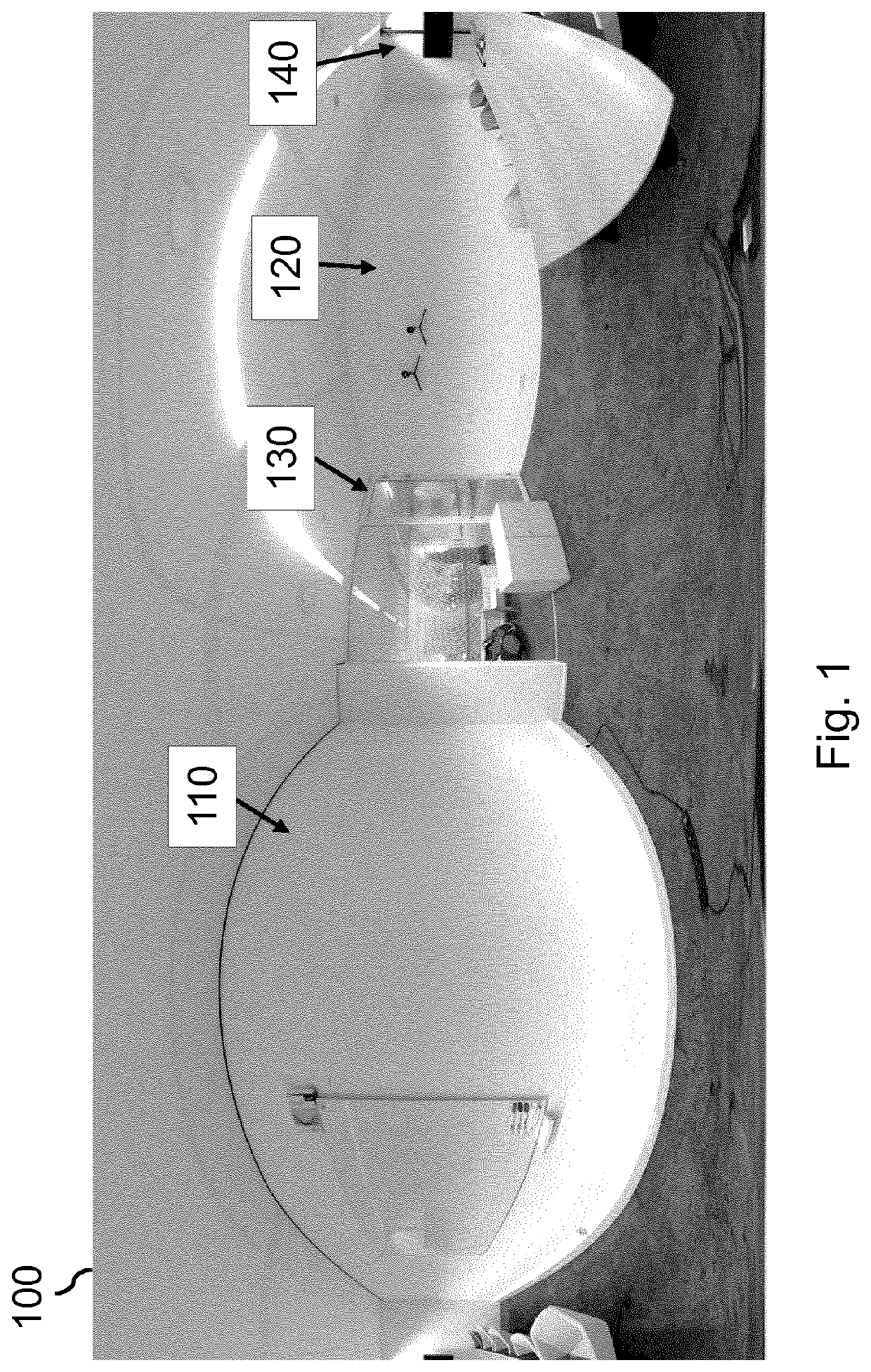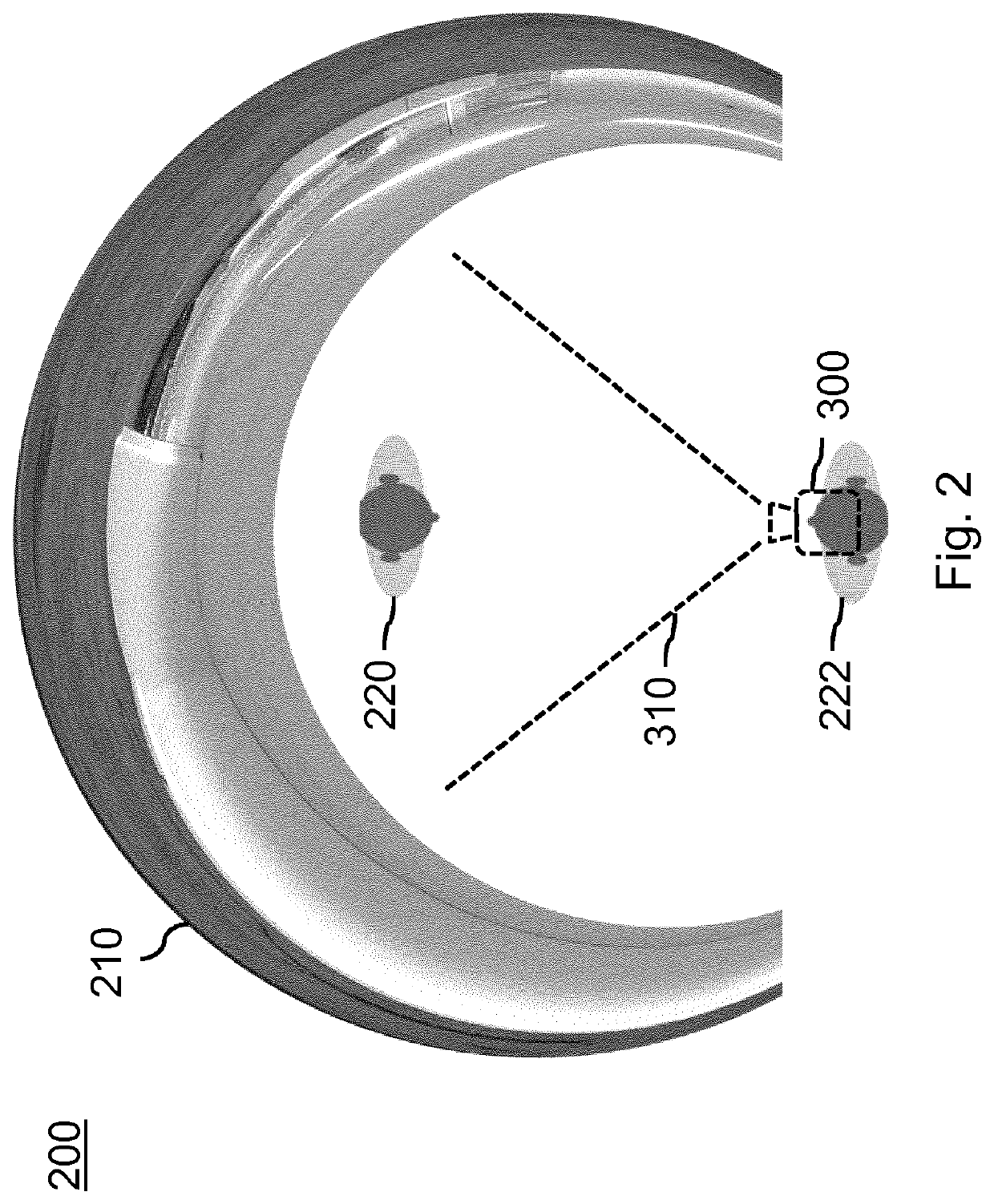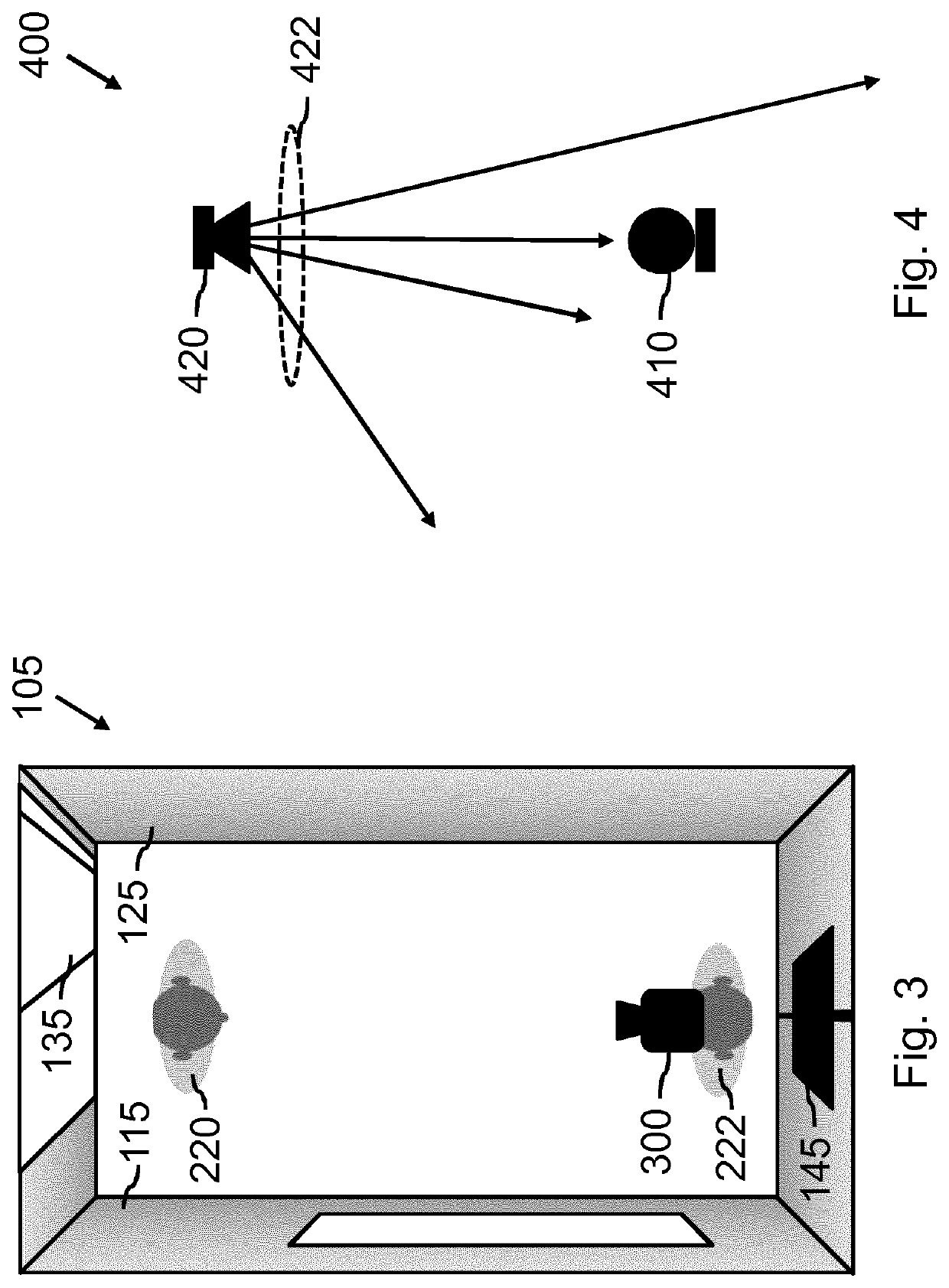Adapting Acoustic Rendering to Image-Based Object
a technology of image-based objects and acoustic rendering, applied in the field of adapting acoustic rendering to image-based objects, can solve the problems of mismatching visual rendering and potentially unrealistic acoustic rendering, similar problems may also occur, and users may experience the acoustic rendering as mismatching visual rendering
- Summary
- Abstract
- Description
- Claims
- Application Information
AI Technical Summary
Benefits of technology
Problems solved by technology
Method used
Image
Examples
Embodiment Construction
[0148]Many of the following embodiments are described within the context of multiuser communication in VR in which an image-based representation of a room is used as a ‘virtual setting’. It will be appreciated, however, that the technical measures described with these embodiments may apply to any type of VR application involving the visual rendering of an image-based representation of an object and the acoustic rendering of an audio source. Examples of such applications include, but are not limited to, VR-based gaming and professional applications in the fields of education, construction, health care, entertainment, etc. In addition to VR applications, also AR applications are conceived in which an image-based representation of an object is overlaid or in another manner displayed together with a real-life scene.
[0149]FIG. 1 shows an omnidirectional image 100 which has been acquired within a room, more specifically a meeting room. The imaged room is shown to comprise walls 110, 120, ...
PUM
 Login to View More
Login to View More Abstract
Description
Claims
Application Information
 Login to View More
Login to View More - R&D
- Intellectual Property
- Life Sciences
- Materials
- Tech Scout
- Unparalleled Data Quality
- Higher Quality Content
- 60% Fewer Hallucinations
Browse by: Latest US Patents, China's latest patents, Technical Efficacy Thesaurus, Application Domain, Technology Topic, Popular Technical Reports.
© 2025 PatSnap. All rights reserved.Legal|Privacy policy|Modern Slavery Act Transparency Statement|Sitemap|About US| Contact US: help@patsnap.com



